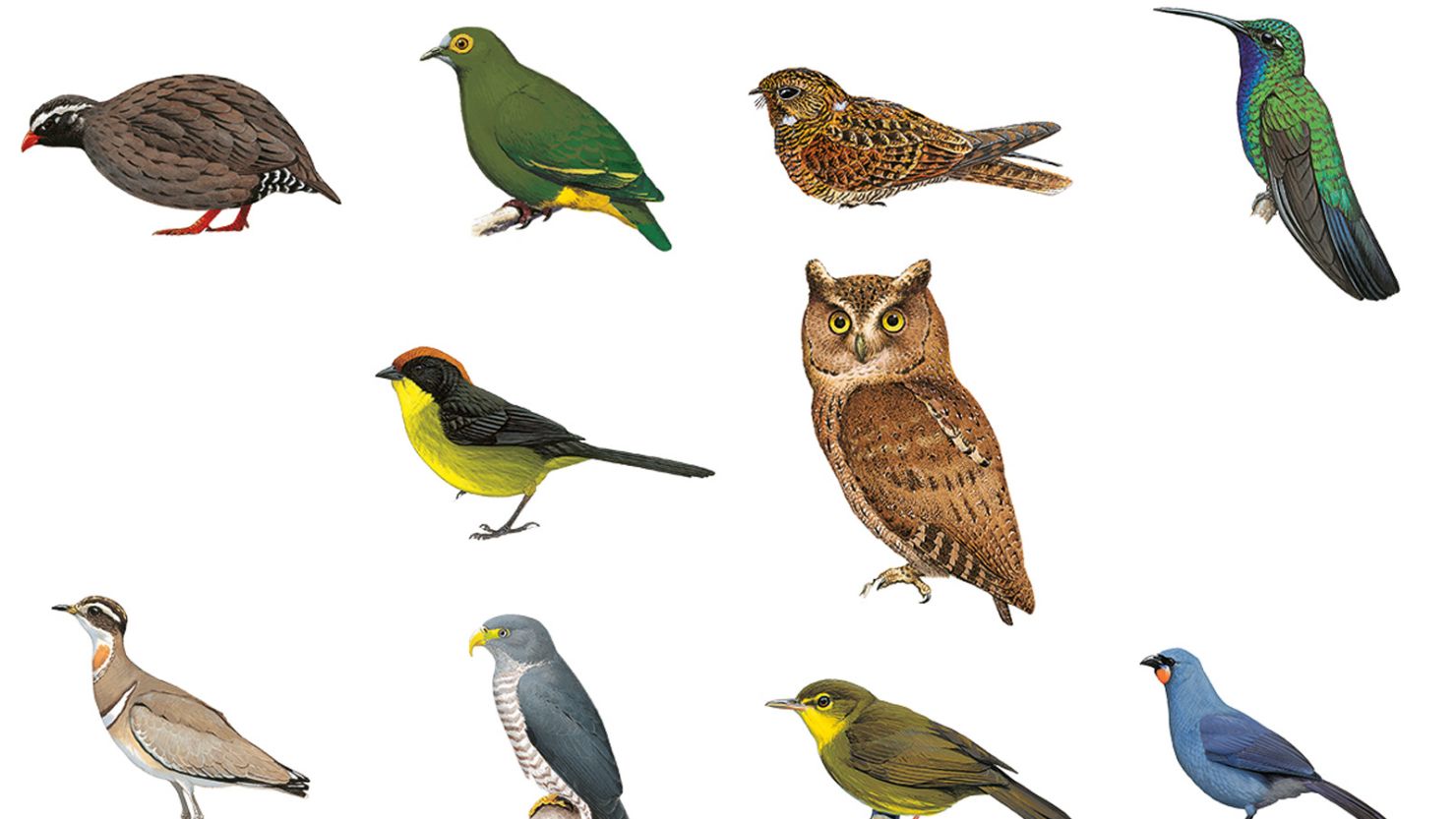Birdwatching is a delightful and fulfilling hobby that allows enthusiasts to connect with nature, learn about various species, and enjoy the beauty of avian life. Whether you are a seasoned birdwatcher or a newcomer to the hobby, having a bird identifier chart can significantly enhance your experience. This article will explore ten birds every bird enthusiast should identify, providing key characteristics, habitats, and tips for spotting each species.
Bird Identifier Chart: American Robin-The Harbinger of Spring
The American Robin is one of the most recognized birds in North America and is often considered a symbol of spring. With its vibrant orange-red breast and cheerful song, this bird is a favorite among birdwatchers. American Robins have bright orange-red breasts, grayish-brown backs, and white bellies, making them visually striking. They are approximately 9-11 inches in length and are known for their melodic and cheerful phrases that signal the arrival of spring. These birds can be found in various habitats, including parks, gardens, and forests, where they prefer open areas with trees and shrubs for nesting. To spot an American Robin, listen for their distinctive song in early spring and watch for them hopping on the ground as they search for worms and berries.
Bird Identifier Chart: Northern Cardinal-A Bright Splash of Red
The Northern Cardinal is known for its striking red plumage and distinctive crest, making it one of the most visually stunning birds in North America. Male Northern Cardinals are bright red with a black mask around the beak, while females are brown with reddish tinges. They measure about 8-9 inches in length and are famous for their clear, whistling notes that vary in pitch. Northern Cardinals are commonly found in gardens, shrublands, and forests, preferring dense vegetation for nesting. To spot a Northern Cardinal, look for the vibrant male perched on low branches or feeders, as their color stands out against the greenery.
Blue Jay: The Intelligent Trickster
Blue Jays are known for their intelligence and complex social behavior, making them a fascinating bird to observe. These birds are easily recognizable by their vibrant blue feathers, white and black markings, and distinctive call. Blue Jays typically measure 9-12 inches in length and have a loud, harsh “jay” sound that can mimic other birds. They thrive in forests, parks, and suburban areas, often found near oak trees, which provide acorns for food. To spot a Blue Jay, listen for their distinctive calls and watch for them in trees or at feeders, as their playful behavior often attracts attention.
House Sparrow: The Urban Survivor
The House Sparrow is a small, adaptable bird commonly found in urban areas, making it a familiar sight for many people. Males have a gray head, black throat, and brown back, while females are mostly brown and streaked. These birds measure about 6-7 inches in length and are known for their series of chirps and whistles. House Sparrows thrive in urban environments, parks, and farms, often seen in areas with human activity. To spot a House Sparrow, look for them around buildings, sidewalks, and outdoor cafes, where they often scavenge for food.
American Goldfinch: The Little Sunbeam
The American Goldfinch is a small, colorful bird that brightens up any garden or park. Males are bright yellow with black wings and cap, while females are more muted in color. Measuring approximately 4.5-5.5 inches in length, American Goldfinches are known for their sweet, twittering notes. They prefer open fields, gardens, and shrubby areas, often found near thistles and sunflowers. To spot an American Goldfinch, listen for their cheerful songs and look for them flitting among flowers or visiting feeders.
Bird Identifier Chart: Red-tailed Hawk-The Majestic Predator
The Red-tailed Hawk is a large bird of prey known for its distinctive red tail and impressive wingspan. These hawks are often seen soaring in the sky, making them a favorite among birdwatchers. With brown and white plumage and a length of approximately 18-26 inches, Red-tailed Hawks are easily recognizable. They have a loud, raspy scream that serves as their call. Red-tailed Hawks can be found in various habitats, including open fields, forests, and urban areas, where they hunt for small mammals. To spot a Red-tailed Hawk, look for them perched on telephone poles or soaring high in the sky, as their characteristic call often gives them away.
Eastern Bluebird: The Charming Songster
The Eastern Bluebird is a small thrush known for its beautiful blue coloration and sweet song. Males are bright blue on top with an orange-brown breast, while females are more subdued in color. These charming birds measure about 6.5-7.5 inches in length and are known for their soft, melodious phrases. Eastern Bluebirds prefer open fields with scattered trees, making them common in rural areas and parks. To spot an Eastern Bluebird, listen for their gentle song and look for them perched on fence posts or low branches.
Bird Identifier Chart: Great Horned Owl-The Night Hunter
The Great Horned Owl is a formidable predator known for its distinctive tufts resembling horns. This owl is one of the most common and adaptable species in North America, measuring about 18-25 inches in length and having brown and gray plumage with a white throat patch. Great Horned Owls are known for their deep, hooting sound. They can be found in various habitats, including forests, deserts, and urban areas, often roosting in tall trees. To spot a Great Horned Owl, listen for their hooting calls at dusk and look for them perched in trees, as their large size makes them noticeable, especially at night.
Common Grackle: The Social Forager
The Common Grackle is a large, iridescent bird known for its striking appearance and social behavior. These birds are often seen in flocks, foraging for food. Common Grackles are approximately 11-13 inches in length and are recognized by their iridescent black plumage with purple and green highlights. They produce a variety of harsh, chattering sounds. Common Grackles are commonly found in open fields, wetlands, and urban areas, often seen near water sources. To spot a Common Grackle, look for them in parks or fields, especially in the spring when they gather in large numbers.
Pileated Woodpecker: The Powerful Drummer
The Pileated Woodpecker is one of the largest woodpeckers in North America, known for its striking red crest and loud drumming sound. With a black body, a red crest, and white markings, these woodpeckers measure about 15-19 inches in length. They are known for their loud and distinctive calls that echo through the woods. Pileated Woodpeckers prefer mature forests, where they forage for insects in dead trees. To spot a Pileated Woodpecker, listen for their loud drumming and look for them on tree trunks, especially in wooded areas.
Conclusion
Identifying birds is an enjoyable and rewarding experience that connects you with nature. The ten birds listed in this article represent just a small sample of the incredible diversity found in the avian world. With the help of a bird identifier chart, you can enhance your birdwatching skills and gain a deeper appreciation for these fascinating creatures. Whether you’re in your backyard or exploring the great outdoors, take the time to observe, listen, and learn about the birds around you.
FAQs
1. How can I start birdwatching?
To start birdwatching, find a good pair of binoculars, obtain a bird identification guide or chart, and explore local parks or nature reserves.
2. What time of year is best for birdwatching?
Spring and fall are the best seasons for birdwatching, as many birds migrate during these times. Summer is also great for observing breeding behaviors.
3. Can I attract birds to my backyard?
Yes! You can attract birds by providing feeders with seeds, nectar, or suet, along with birdbaths for drinking and bathing. Planting native shrubs and flowers can also help.
4. How do I know which birds are in my area?
You can use a bird identification chart specific to your region, join local bird watching groups, or utilize smartphone apps that help identify birds based on location.
5. Is birdwatching a good hobby for families?
Absolutely! Birdwatching is a great way for families to bond, spend time outdoors, and learn about nature together. It promotes curiosity and appreciation for wildlife.
Also read: Travel Toothbrush: 10 Revolutionary Designs for Superior Hygiene on the Move




Leave a Comment